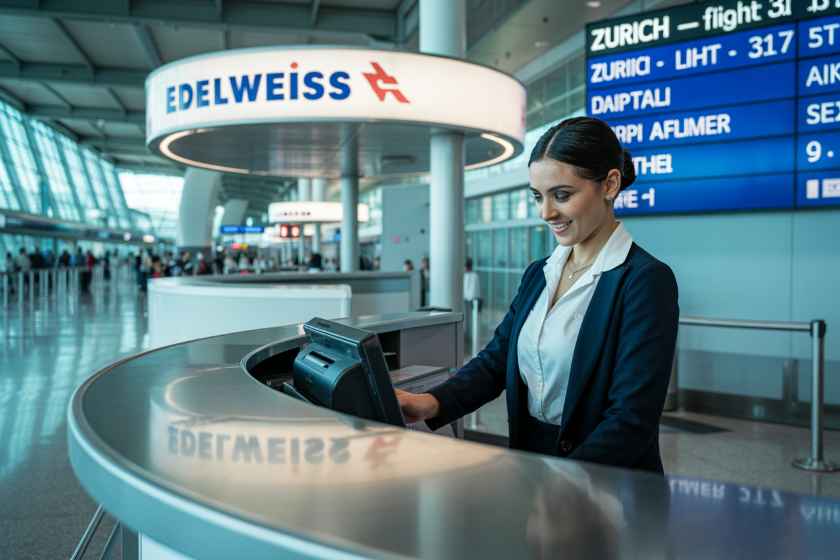Published on
August 21, 2025
Edelweiss, Switzerland’s leading leisure airline and sister carrier to Swiss, is set to enlarge its short-haul fleet significantly with the acquisition of two Airbus A320 jets from Swiss, which includes its inaugural A320neo. The announcement, made on August 19, 2025, ushers in the airline’s narrowbody fleet renewal and will lift Edelweiss’ total to 16 aircraft by April 2026, enabling stronger service to key European tourism markets. The new aircraft will fortify Edelweiss’ standing as a leading European travel player, widening route choices for holidaymakers and raising the efficiency of regional services. The A320neo, a next-generation model with lower fuel burn compared to the A320ceo, not only streamlines the airline’s costs but also answers the growing industry call for more sustainable flying.
Fleet Modernization and Enhanced Tourism Connectivity
Introducing the Airbus A320-200 and A320neo is a key milestone in Edelweiss’ ongoing fleet modernization. The A320-200 (HB-JLQ) will be in service by mid-October 2025, while the A320neo (HB-JDB), stored since 2023, will operate from April 2026. The A320neo will be vital in expanding tourism ties to sought-after European destinations. With its 15% lower fuel burn and smaller carbon footprint, the A320neo directly supports the carrier’s commitment to greener flying.
Edelweiss is already laying the groundwork for these newcomers, signalling a solid rebound in European short-haul demand. The A320neo’s quieter engines suit busy city airports, while its greater range opens the door to fresh routes linking Switzerland to key European gateways. The result will be a wider, more convenient tourism network, encouraging visitors to explore Switzerland and its neighbouring countries with greater ease.
Impact on European Tourism Markets
The arrival of these new narrowbody jets positions Edelweiss to meet the surging demand from the European tourism market. With the airline’s established footprint in holiday and leisure travel, the expanded fleet will enable more frequent and cost-efficient services to Swiss gateways like Zurich and Geneva, as well as key European hubs. Travelers will benefit from more daily flights and longer connecting routes that seamlessly blend business and leisure itineraries.
Visitors from around the globe will gain simpler, faster access to the Swiss Alps, Zurich’s renowned museums, and the scenic Lake Geneva region. Edelweiss will also strengthen regional travel by connecting Switzerland to sought-after European highlights in Italy, Germany, France, and Austria, enriching the continent’s cross-border tourism landscape.
Together, the new routes and upgraded fleet will enhance flexibility and convenience, aligning with the broader recovery of European tourism. Demand is clearly rising as travelers seek itineraries that combine outdoor adventure, cultural immersion, and luxury leisure, and Edelweiss is ready to deliver on this expanding appetite.
Sustainability Focus: A Step Toward Eco-Friendly Aviation
Adding the A320neo to the fleet does more than strengthen tourist links; it underscores Edelweiss’s pledge to greener skies. Fuel burn is down, which trims operating expenses and, more important, shrinks the airline’s carbon output. Globally, passengers and regulators are raising the bar for eco-responsibility, so investing in quieter, thriftier jets positions Edelweiss well in the fast-growing market for conscious travel.
Switzerland has long woven sustainability into its national identity, and its airline sector is no exception. The A320neo strengthens the Swiss government’s vision of the country as the cradle of eco-tourism. A modern fleet aligns perfectly with that goal, allowing Edelweiss to promote responsible travel across the continent, with greener aircraft for greener getaways.
Regional Expansion and New Tourism Opportunities
A larger fleet is more than a numbers game; it’s a chance to broaden the adventure map. The A320neo’s range and payload let Edelweiss tap into fresh markets while boosting seat availability on established routes. With extra narrowbodies, the airline can point Europa’s curious wanderers to the Swiss Alps, Lake Geneva, and later, to returning visitors in smaller, high-demand cities across Europe—all without ramping up the environmental toll.
Launching fresh routes along with upping the frequency on those we already operate will firmly place Switzerland within easy reach for travelers around the world. Lower fares grant visitors from key markets like the UK, Germany, and Italy a greater range of choices for any trip—be it business, leisure, or an exploration of the country’s rich cultural heritage.
Conclusion
As we roll out our next phase, we will align our efforts with Swiss Tourism to capitalise on the wider reach made possible by our updated fleet. The Tourism Board curates Switzerland’s many irresistible offerings, and the boost in seating capacity will now make it simpler for more visitors to experience cultural, sight-seeing and adventure tourism all over the nation.
